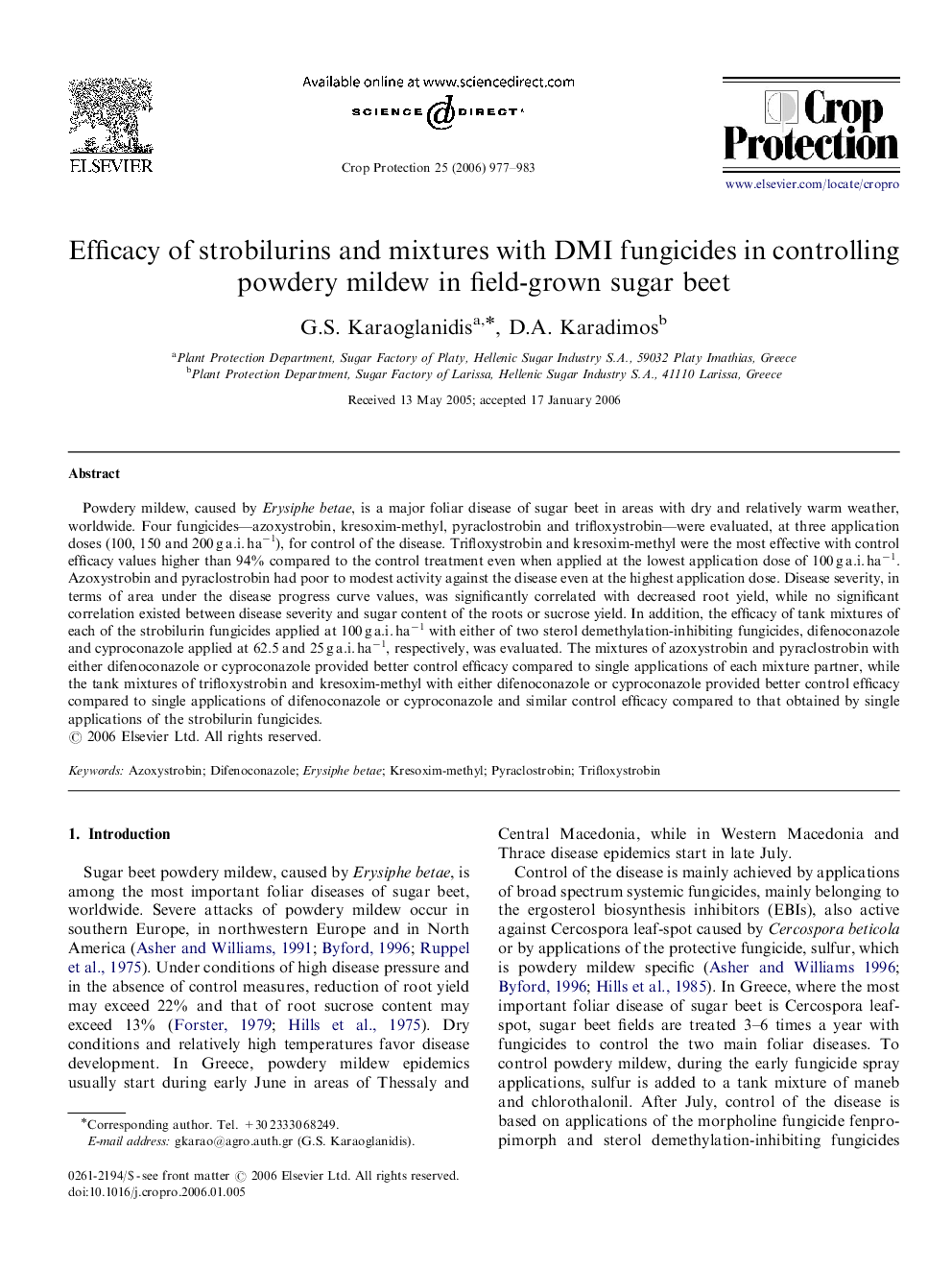| Article ID | Journal | Published Year | Pages | File Type |
|---|---|---|---|---|
| 4508079 | Crop Protection | 2006 | 7 Pages |
Powdery mildew, caused by Erysiphe betae, is a major foliar disease of sugar beet in areas with dry and relatively warm weather, worldwide. Four fungicides—azoxystrobin, kresoxim-methyl, pyraclostrobin and trifloxystrobin—were evaluated, at three application doses (100, 150 and 200 g a.i. ha−1), for control of the disease. Trifloxystrobin and kresoxim-methyl were the most effective with control efficacy values higher than 94% compared to the control treatment even when applied at the lowest application dose of 100 g a.i. ha−1. Azoxystrobin and pyraclostrobin had poor to modest activity against the disease even at the highest application dose. Disease severity, in terms of area under the disease progress curve values, was significantly correlated with decreased root yield, while no significant correlation existed between disease severity and sugar content of the roots or sucrose yield. In addition, the efficacy of tank mixtures of each of the strobilurin fungicides applied at 100 g a.i. ha−1 with either of two sterol demethylation-inhibiting fungicides, difenoconazole and cyproconazole applied at 62.5 and 25 g a.i. ha−1, respectively, was evaluated. The mixtures of azoxystrobin and pyraclostrobin with either difenoconazole or cyproconazole provided better control efficacy compared to single applications of each mixture partner, while the tank mixtures of trifloxystrobin and kresoxim-methyl with either difenoconazole or cyproconazole provided better control efficacy compared to single applications of difenoconazole or cyproconazole and similar control efficacy compared to that obtained by single applications of the strobilurin fungicides.
